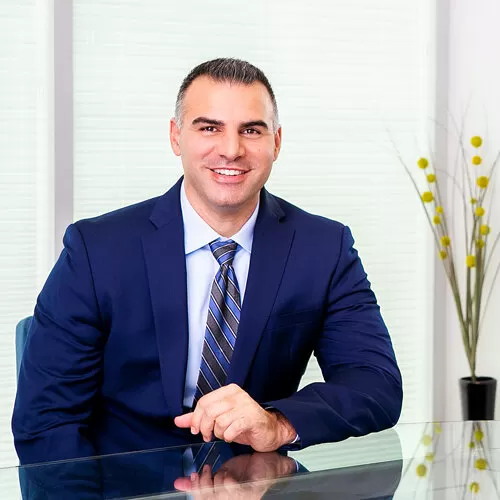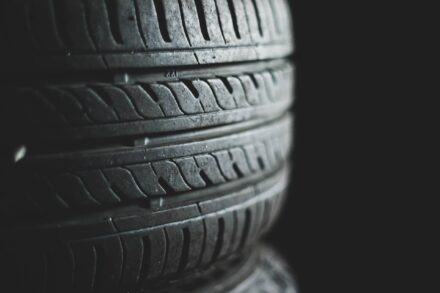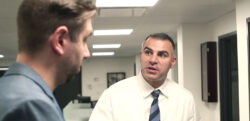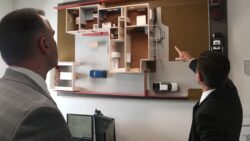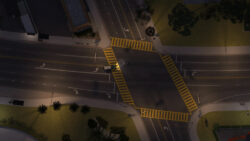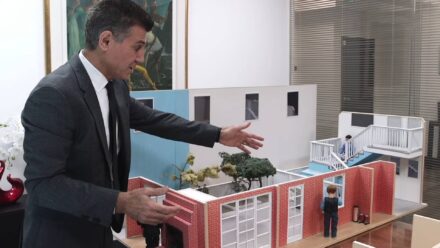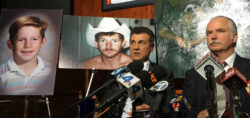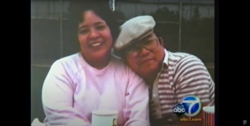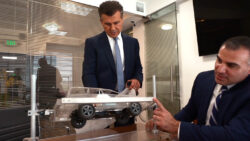In Brief: Catastrophic rollover crash exposes Ford Explorer’s design flaws and dealership’s negligence in unaddressed vehicle defect
“It’s unfortunate that Ford keeps hiding their head in the sand like an ostrich, thinking that this SUV is safe.”
On May 24, 1997, Agop Gozukara was driving his 1994 Ford Explorer with his family when a big-rig truck swerved into their lane. Agop lost control after the vehicle began shaking violently, a known problem with the car. After hitting a concrete barrier, the SUV flipped multiple times, resulting in life-changing injuries for the family, including permanent paralysis for his pregnant wife, Catherine.
Garo stepped in during their darkest hour, ultimately recovering a multimillion-dollar settlement for the devastated family.
Total Payout:
$14,900,000.00
The Background
“The dealership knowingly sold the used vehicle with a vibration problem in the front end, which they didn’t fix despite it being brought in several times.”
In 1997, Agop and Catherine Gozukara of Newport Beach, California, were a happily married couple in their mid-thirties and the proud parents of two sons: Michael, 10, and Alain, less than a year old. With another child on the way, they decided to buy a 1994 Ford Explorer from Joe MacPherson Ford, a dealership in Tustin, California. The four-door SUV with 48,000 miles on it seemed like the perfect choice for their growing family until they noticed something was wrong: a persistent vibration in the front end of the vehicle.
Within three short months, the Gozukaras had taken their Explorer back to Joe MacPherson Ford several times, each time hoping to get the problem fixed. But despite their repeated visits and assurances from the mechanics that the problem was either fixed or inconsequential, the vibration would not go away.
The Incident
On May 24, 1997, the Gozukara family set out on a trip to Las Vegas, with Agop driving their new Ford Explorer. Catherine sat beside him in the passenger seat, with their sons and 10-year-old nephew, Sayat, in the back.
They were on a stretch of the I-15 known as the Mojave or Barstow Freeway, approaching a construction detour. Suddenly, a big-rig truck in the adjacent lane swerved, forcing Agop to slam on his brakes. Once again, the front end of the SUV began shaking violently. Agop lost control of the vehicle, which then collided with a concrete barrier installed by the California Department of Transportation (Caltrans).
The impact was catastrophic. The car didn’t just crash: it climbed and traveled on top of the concrete barrier for 100 feet before crossing into oncoming traffic and rolling over several more times. Agop, Michael, Alain, and Sayat were immediately ejected from the vehicle. Catherine, who was not wearing her seat belt, bounced around in the rolling vehicle until she too was projected through a window.
The children were lucky to avoid serious injury, but the same could not be said for the adults. Agop suffered severe leg fractures that have left him with mobility problems to this day. Catherine sustained a catastrophic spinal fracture that left her paralyzed for life. Tragically, she also miscarried.
Leading the Charge
“The vehicle shouldn’t have rolled when it came off the K-rail, but it did because the center of gravity was too high.”
In the wake of the tragic accident, Agop and Catherine Gozukara sued Ford Motor Co, Joe MacPherson Ford, and the California Department of Transportation.
The legal battle that ensued was led by Garo, who represented Catherine. Understanding the broader implications of the case, Garo took up the Gozukaras’ cause not only to seek compensation for the family’s profound losses, but also to challenge an auto industry giant on the safety of one of its most popular vehicles.
His strategy was to meticulously dissect the design and history of problems with the Explorer, with the goal of demonstrating a pattern of negligence that could implicate the automaker’s liability in rollover accidents. It was not about just this one incident, but the safety of millions of drivers and passengers in similar vehicles.
Assigning Blame
“My courtroom was filled with electronic media, wires, and vehicle parts. It began to look and smell . . . like a high-tech auto shop.”
Over the course of the four-month trial and with a staggering 527 pieces of evidence presented by the parties, the Superior Court of San Bernardino County was transformed into what Judge Vander Feer called a “high-tech auto shop,” filled with vehicle analysis exhibits and electronic displays.
The Case Against Ford Motor Co.
The plaintiffs’ case against Ford Motor Co. focused on what they claimed were design defects in the Ford Explorer. The argument presented by Garo and co-counsel Charles B. O’Reilly was that the SUV’s design, particularly its high center of gravity, made it prone to rollover in emergency situations. Evidence included videos of prototype Explorers tipping over during testing, as well as Ford’s internal documents, which the plaintiffs argued showed the company knew about the rollover risks.
Ford’s lead attorney William J. Conroy and his team, including Daniel S. Rodman and others, disputed this claim. They contended that the prototype vehicles shown in the videos did not reflect the final design of the Explorer, which had been modified to improve stability. The defense also emphasized the vehicle’s compliance with federal safety protocols and its performance relative to other vehicles in its class.
O’Reilly, however, was quick to challenge the defense’s narrative and was vocal about the lack of documentation provided by Ford to prove that the design had been altered since the prototype stage. “Ford claims they altered the Explorer’s design since the prototype, but they have no documents to prove that they made those changes,” he argued, suggesting that without such evidence, the jury could not be assured that the alleged design changes were actually implemented—or effective.
The Case Against Joe MacPherson Ford
The focus of the case against Joe MacPherson Ford, on the other hand, was the persistent vibration problem reported by the Gozukaras. Garo and Charles contended that the dealership’s failure to correct this defect was a critical factor in the crash. They portrayed this as a clear breach of the dealership’s duty to ensure the safety of the vehicles it sells and services.
The attorneys representing the dealership argued that the accident was caused by an unpredictable and extraordinary event—the collision of the vehicle with the Caltrans barrier. Such an event, they said, was outside the scope of what the dealership could have foreseen or prevented.
Garo refuted this narrative with a robust array of evidence, including the vehicle’s detailed service history—which documented the Gozukaras’ repeated and unheeded requests that the vibration be addressed—expert testimony, and three-dimensional exhibits, demonstrating the potential for the unaddressed vibration to lead to a catastrophic loss of vehicle control.
In the end, the testimony of Pat Apacoda, the first medical examiner on the scene, proved decisive. His retelling of Agop Gozukara’s description of the immediate aftermath of the accident resonated with the jury: “He had very bad English and a strong accent, but he finally said and showed me with his hands, ‘Shake, shake, vibrate car.’”
The Outcome
“The jury came back and originally said they were dead-locked, so we were very nervous.”
While the jury identified a design defect in the Explorer, they stopped short of attributing the accident’s causation to Ford, instead assigning the bulk of liability—90% for Agop’s injuries and 89% for Catherine’s—to Joe MacPherson Ford for failing to make proper repairs. Catherine was deemed 10% liable for her injuries due to not wearing a seat belt, and Caltrans was apportioned a nominal 1% fault. Caltrans had previously settled with the Gozukaras for $5.5 million over road design and K-rail placement.
Before the damages phase of the trial could begin, the dealership offered the Gozukaras a $9.4 million settlement. Notably, the Gozukaras, with Garo’s support, refused a confidentiality clause, insisting on publicizing the settlement details. “We want everyone that’s been injured in a Ford Explorer to know that these vehicles have a dangerous propensity to roll over under foreseeable and reasonable circumstances.”
In the end, Garo helped the Gozukaras secure a total of $14.9 million in settlements to cover their extensive medical needs and help them adjust to a new life after the tragedy. Perhaps as importantly, this case has also set a precedent with far-reaching implications for future litigation against auto manufacturers, underscoring the importance of vehicle safety and corporate responsibility.
“This [decision was] a resounding victory for plaintiffs across the country,” Garo said, “because they can use that portion of the verdict in other cases. This is a watershed in terms of establishing precedent.”
Schedule Your Free Case Evaluation
Our Lawyers Are Dedicated To Helping Those Who Have Been Catastrophically Injured
Contact Mardirossian Akaragian LLP Today
Our firm offers exceptional talent, abundant resources, tireless dedication, and years of experience to give you the best chance of success in obtaining maximum compensation. Led by our award-winning founding attorney, Garo Mardirossian, we are prepared to provide you with aggressive representation and personalized legal guidance you need.
Talk to a Los Angeles personal injury lawyer about your case or contact our firm to schedule a no-cost consultation.
Schedule Your Free Catastrophic Injury Case Evaluation
ARTICLE BY
ARMEN AKARAGIAN
Admitted to practice in 2006, Armen has arbitrated, tried, and settled several cases which have resulted in multi-million dollar verdicts and settlements.
Sources cited in this article:
-
“Santa Monica Boulevard” – Wikipedia
-
“Police Radio Codes” – Stanford University
-
“Summary Corrective Action Plan” – County of Los Angeles
-
“CA Veh Code § 22350 (2017)” – Justia
-
“Peace Officer Bill of Rights” – Peace Officers Research Association of California
